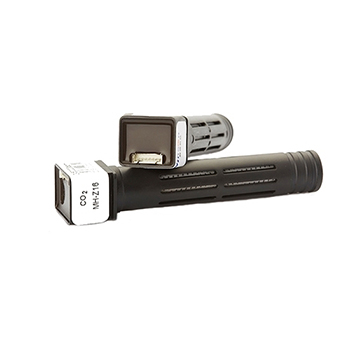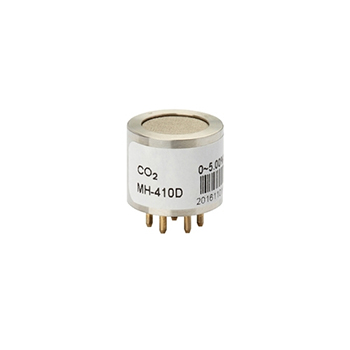What does an Infrared CO2 Sensor do?
When it comes to carbon dioxide sensors, everyone will feel unfamiliar, but this device plays a huge role in our production and life. So, what kind of device is a carbon dioxide sensor? What are its applications and functions? Today, ATO will introduce the application and function of the carbon dioxide sensor in the article, hoping you will like it.
What is the function of a CO2 sensor?
The carbon dioxide sensor mainly measures the carbon dioxide composition in the atmospheric environment, which has a very important impact on every field. With the continuous progress of modern society, the content of carbon dioxide is gradually increasing. Excessive carbon dioxide content will have a serious impact on our bodies, and it will also pose a threat to the environment we depend on for survival.
The greenhouse effect is a good example. The photosynthesis and respiration of plants have a great relationship with carbon dioxide concentration, so the birth of the carbon dioxide sensor has taken us a big step forward.
So far, there are many methods for detecting carbon dioxide, probably the: titration method, solid electrolyte method, capacitive method, Hiroden method, infrared absorption method, and other methods.
The CO2 sensor is suitable for the detection of various environments, and it will not have the slightest effect in harsh environments. The material can effectively prevent corrosion. The system uses hidden wire installation, which can be fixed on the wall or where you need it. The carbon dioxide sensor has a beautiful appearance, and the lead wire passes through the back of the shell. It is suitable for concealed wire devices, has good stability, long service life, AC and DC power supply, and is suitable for detecting carbon dioxide in various environments.
Working principle
Due to the different molecular internal structures of various substances, different substances have different selective absorption of different wavelengths of light, that is to say: substances can only absorb light of specific wavelengths, and the absorption relationship of substances to certain wavelengths of light obeys Lambert-Beer (Lambert-Beer) absorption law.
For the infrared carbon dioxide sensor, the infrared light source emits 1-20μm infrared light, which is absorbed by a certain length of the gas chamber, and then passed through a 4.26μm wavelength narrow-band filter, which is monitored by the infrared detector through the 4.26μm wavelength infrared light. The intensity of light indicates the concentration of CO2 gas.
With the wide application of carbon dioxide gas in various industries, the control of carbon dioxide content is becoming more and more stringent. Carbon dioxide sensors play an important role in various fields such as smart homes, smart agriculture, industrial gas emissions, and automotive air conditioning systems.
Application
Infrared CO2 sensors are widely used in many fields such as industry, agriculture, national defense, medical and health care, environmental protection, and aerospace.
In terms of greenhouse agriculture, vegetables require a carbon dioxide concentration of 1000-1500ppm, which consumes a lot. Therefore, the amount of carbon dioxide in plastic greenhouses is very important and has become an important factor affecting the production of vegetables in plastic greenhouses. Installing a carbon dioxide sensor in a plastic greenhouse can ensure a timely alarm when the concentration of carbon dioxide is insufficient so that the use of gas fertilizer can ensure that vegetables, edible fungi, flowers, and traditional Chinese medicines are listed in advance with high quality and high yield.
Smart home
Carbon dioxide sensors can be integrated into smart home devices such as fresh air conditioners, fresh air systems, and air boxes to improve indoor air quality and create a good living environment for us.
Smart Agriculture
In modern agricultural planting, real-time monitoring and automatic adjustment of carbon dioxide concentration has become essential technology for intelligent planting and breeding. Carbon dioxide sensors used in high-temperature and high-humidity environments such as agricultural greenhouses need to have the ability to resist high-humidity interference, and dual-channel sensor products are generally selected.
Industrial Gas Emissions
As the level of industrialization increases, greenhouse gas emissions also increase. In the context of carbon neutrality, the world is paying more attention to the emission of greenhouse gases such as carbon dioxide. The detection of carbon dioxide gas in the industrial field also requires the assistance of industrial carbon dioxide sensors.
Automotive Air Conditioning System
As cars gradually become the "third space" in life, people are paying more and more attention to the concentration of carbon dioxide and organic gases in cars. Carbon dioxide has not only become an important indicator to measure the air quality in the car but also an important means to prevent fatigue driving. The application of carbon dioxide sensors in automotive air conditioning systems is becoming more and more common.
Applications in everyday life
The function of the carbon dioxide sensor in daily life is mainly to detect the carbon dioxide content in the air and help people predict the air quality in advance. If the air quality is poor, people will take measures to improve the air quality to ensure people's healthy life. Therefore, carbon dioxide sensors can be used in densely populated places such as schools, kindergartens, supermarkets, shopping malls, stations, hospitals, and office buildings.
Precautions
The infrared carbon dioxide sensor is a precision electronic component, and the following items should be paid attention to during use:
- The infrared sensor needs to be preheated before use. Preheating is a process to stabilize the optical system components inside the infrared sensor, which can make the sensor achieve better test performance.
- In order to ensure that the sensor can work normally, the power supply voltage must be kept within the specified range. If it exceeds the range, the sensor may malfunction, resulting in a low output concentration of the sensor or malfunction.
- The sensor should be kept away from heat sources, and avoid direct sunlight or other heat radiation. Do not use the sensor for a long time in an environment with high dust density.
- If the sensor needs to be placed in a narrow space, the space should be well-ventilated, especially the two diffusion windows should be in a well-ventilated position.

